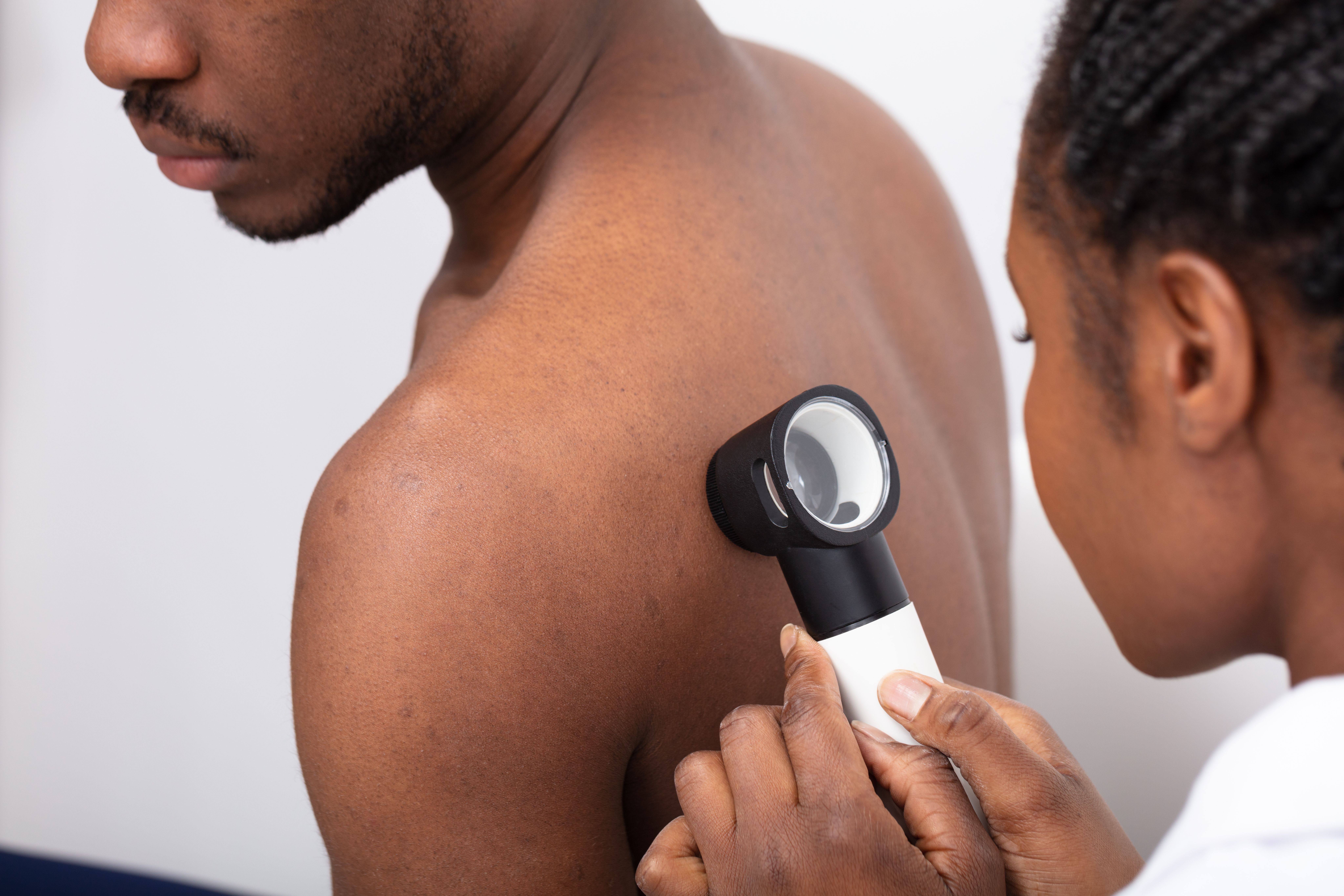- Case-Based Roundtable
- General Dermatology
- Eczema
- Chronic Hand Eczema
- Alopecia
- Aesthetics
- Vitiligo
- COVID-19
- Actinic Keratosis
- Precision Medicine and Biologics
- Rare Disease
- Wound Care
- Rosacea
- Psoriasis
- Psoriatic Arthritis
- Atopic Dermatitis
- Melasma
- NP and PA
- Skin Cancer
- Hidradenitis Suppurativa
- Drug Watch
- Pigmentary Disorders
- Acne
- Pediatric Dermatology
- Practice Management
- Prurigo Nodularis
- Buy-and-Bill
News
Article
Importance of APPs in Treating and Understanding AD
Author(s):
Researchers analyzed APPs treatment and perceptions on AD in studies focusing on patient satisfaction and patients with skin of color.
Image Credit: © Andrey Popov - stock.adobe.com

Several posters presented at the Maui Derm NP+PA Fall 2024 Conference in Nashville this week focused on the importance of advanced practice providers (APPs) within the dermatological practice, specifically when it comes to treating atopic dermatitis (AD).
One poster, presented by Gorlick et al, centered around patient treatment and management perceptions, including treatment cost and patient burden.1
AD Treatment, Burden, and Costs: The Essential APP
The analysis examined patient satisfaction with AD treatments and the role of APPs in managing the disease. Data was collected through a survey of 187 patients with moderate to severe AD, involving both systemic and topical therapies.
Key Findings
- Patient Satisfaction: Researchers stated 63% of patients on systemic therapy and 42% on topical-only therapy were very satisfied with their current medications. Despite this, they found a significant portion still experienced substantial emotional and daily life impacts from AD.
- Role of APPs: APPs were noted for their involvement in diagnosing AD, monitoring the disease, and engaging patients in treatment decisions. Additionally, most patients felt that APPs helped them manage the psychological aspects of their condition.
- Costs: According to the analysis, the average monthly cost for systemic treatments was $69.00, compared to $31.50 for topical-only treatments. Over-the-counter medication costs were found to be slightly lower. Cost was noted as a concern for many patients.
- Desire for New Treatments: The analysis found nearly half of the patients on systemic therapy and a third of those on topical-only therapy were interested in exploring new treatment options.
In summary, while patients appreciated their APPs' support and reported high satisfaction with their current treatments, researchers found a high burden remained and there is still an ongoing need for better therapies.
The second poster, presented by Nquyen et al, focused on APP treatment and perceptions on managing AD in patients with skin of color (SOC).2
AD in Patients with SOC: APP treatment and perceptions
The cross-sectional study involved APPs from dermatology and allergy practices across the US. Researchers analyzed data from 914 patients, categorized by race and ethnicity into White, Black/African American, Asian, and Hispanic/Latino groups.
Key Findings
- Severity: Researchers found this to be similar across all groups, with 51% of White, 58% of Black/African American, 54% of Asian, and 59% of Hispanic/Latino patients having moderate to severe AD.
- Affected Areas: The study found Asian patients had the highest head and neck involvement (54%) and lowest trunk involvement (23%). Hispanic/Latino patients showed the most frequent involvement of extremities (79%).
- Systemic Therapy: Administered to 49% of White, 46% of Black/African American, 48% of Asian, and 50% of Hispanic/Latino patients, according to the study.
- Topical Therapy Only: Used by 31% of White, 38% of Black/African American, 37% of Asian, and 38% of Hispanic/Latino patients, according to the study.
- Corticosteroids: Prescribed to 20% of White, 20% of Black/African American, 19% of Asian, and 14% of Hispanic/Latino patients, according to the study.
Treatment Goals
Researchers found that APPs prioritized managing pruritus, improving quality of life, achieving long-term control, and reducing flare severity with varying emphasis based on ethnicity.
In summary, while disease severity and treatment types were consistent across racial and ethnic groups, researchers stated differences in disease presentation highlight the need for tailored treatment approaches. The study suggests that personalized care is essential to address the specific challenges faced by patients with SOC.
To explore more of our coverage from Maui Derm NP+PA Fall 2024, click here.
References
- Gorelick J, Bush L, Miller L, et al. Advanced practice providers are highly involved in patient care and treatment decisions for atopic dermatitis: Patient treatment and management perceptions, including treatment costs, and patient burden from a real-world US study. Poster presented at Maui Derm NP+PA Fall 2024, September 15-18; Nashville, Tennessee.
- Nguyen A, Alexis A, Alderdge L, et al. Advanced practice provider treatment and perceptions on managing atopic dermatitis in patients with skin of color: Results of a real-world study in the United States. Poster presented at Maui Derm NP+PA Fall 2024, September 15-18; Nashville, Tennessee.






